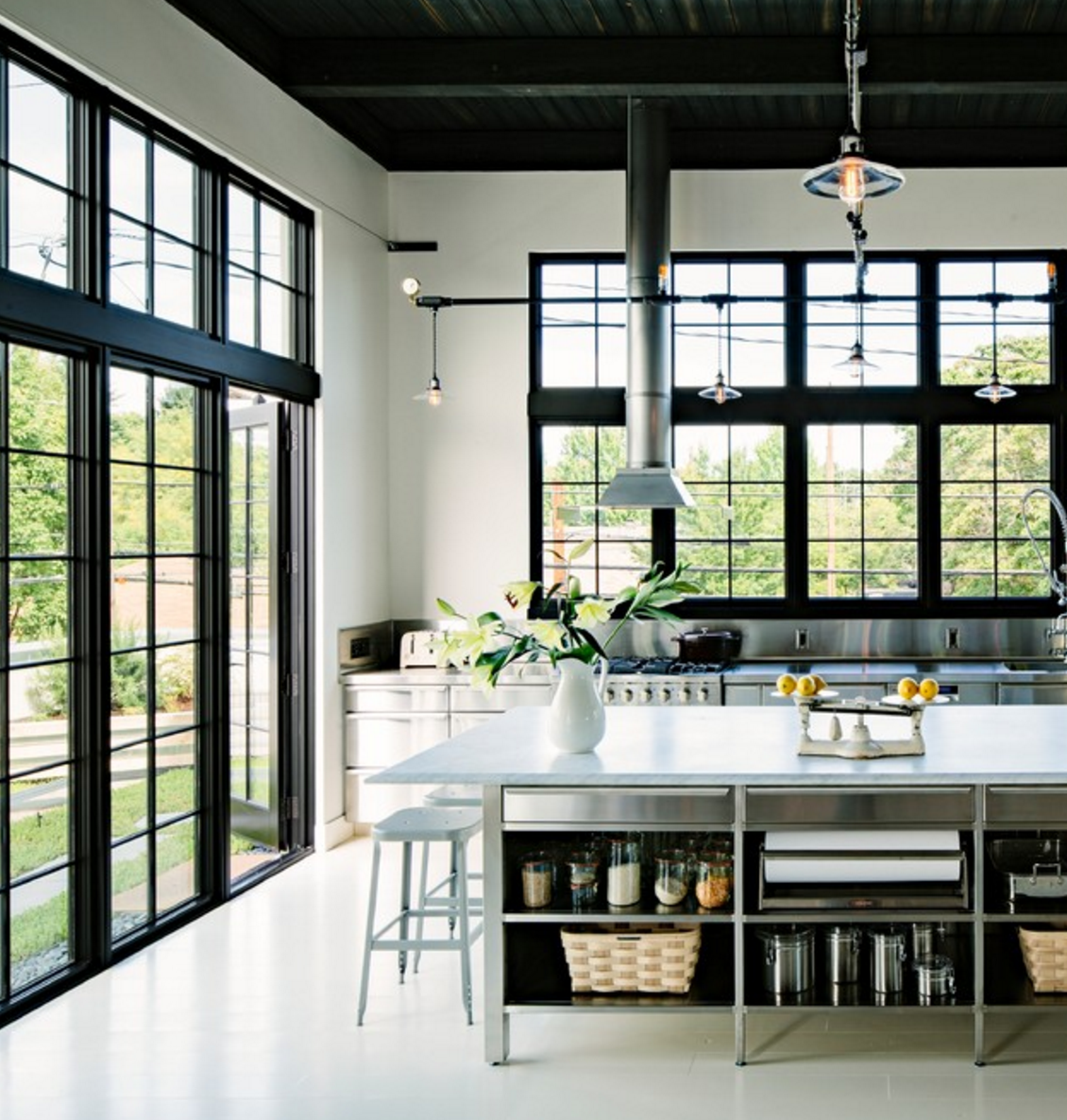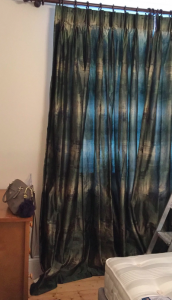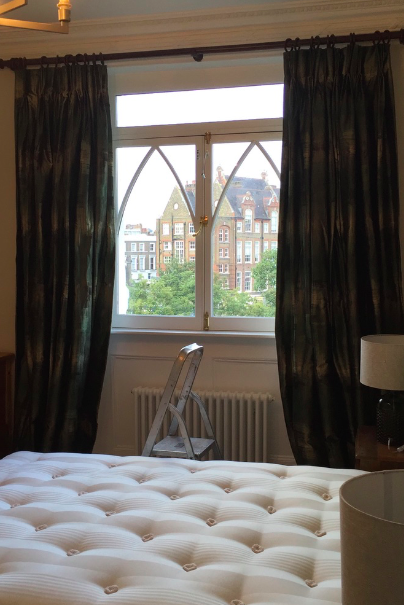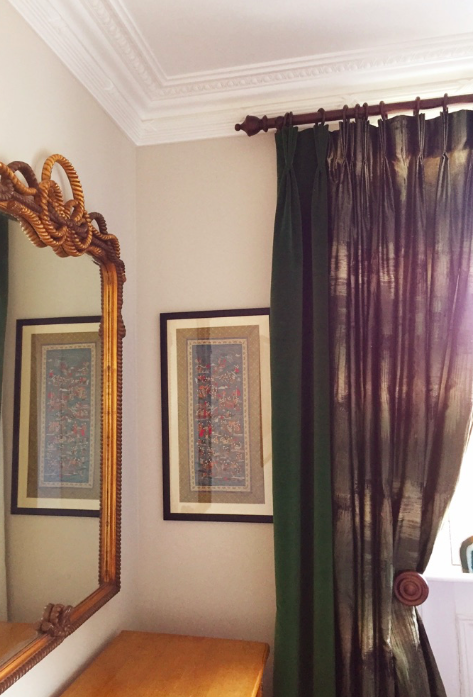
How to problem solve in a way that enhances, not hinders your design:
Some of our most successful design features cover up problems. Most of the time they hide flaws within a building – our stunning onyx seat in our recent Knightsbridge design hides the fact there is an unmovable cement column that cuts into the bathroom, so we recessed a seat next to it and matched it on the other side. Occasionally, they have to hide less structural mistakes.

In our Regent’s Park property we had a problem placing the curtain rails where we had planned them. The allocated space cut directly into the cornicing exactly where the supporting pins were, so wasn’t feasible. We ended up having to put them slightly lower and making them slightly longer. This left the pre-ordered curtains too narrow to close properly and draping a little too heavily on the floor. There was an option to remake the curtains to the new proportions, but the fabric was end of roll in a discontinued line (as is always the way when you want more) and that would have been a very costly solution. We loved the existing fabric and couldn’t find a suitable replacement, so we decided to enhance it and tac on a different fabric to the each side of the curtains, and shorten the whole lot while we were at it.
To make the side panels look like a design choice and not just an extension, we went for a block tone fabric, a dark green velvet in a heavier weave to give a bold outline to the window. You do need to be careful when adding silks or other delicate fabrics to heavier ones, as you run the risk of puckering and it won’t hand nicely. Be aware that it might also require a different lining fabric, in this case a slightly stronger one to support it. We recommend a skilled curtain maker, such as Premier Choice when it comes to fiddly detailing.
We think the final result is more appealing and interesting than the original. A little creative, sideways thinking should solve anything. Do you agree? Have you managed to turn any near disasters into triumphs?

BEFORE

AFTER

